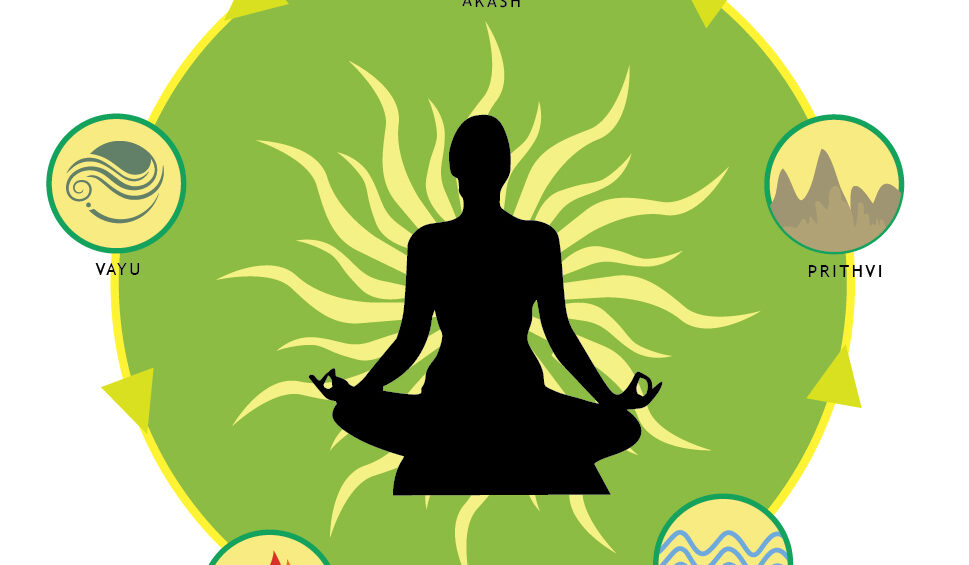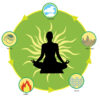Introduction
Ayurveda is one of the oldest known healthcare science known to the world. It is said to be originated in the Indian Subcontinent around 5000 years back. It is also one of the oldest documented science.
The changing lifestyle and increase in stress has driven people towards finding a natural way of healing, thus leading towards Ayurveda. Ayurveda literally means Science of Life.
Ayurveda books or granthas basically describe how to lead a long and disease free life giving preventive and social measures and also providing medicine knowledge to help people lead a disease free life physically and mentally.
In ancient times Ayurveda was known all over the world by travellers documenting their version of Ayurveda studied in India though Greek, Roman and middle east, Buddhist monks thought Ayurveda to Tibet, Nepal and China.
It we want to understand Ayurveda in the deepest form. We have to understand and learn Sanskrit.
Sanskrit
Sanskrit is the language from which the present day Indian languages originated. All the granthas or texts were written in Sanskrit. So it given us the ability to understand and interpreted the science better.
Since it is a very old science .It is important that people understand what the ancient books or granthas exactly mean. The Indian Ayurveda books or granthas are written in Sholas or Verses that are rhyming. This style helps in keeping the Vedic oral traditional of conserving knowledge.
Now a day many Ayurveda doctors have penned down their vast experience to help the new generation, to understand the science better in their local language.
The shlokas are written in such a manner that they can be recited well and remembered because in ancient time all the Shlokas or granthas were recited and remembered by heart.
With time the need to be written down of this vast knowledge became important. So all the sages or vaidyas in ancient day wrote the whole granthas on palm leaves.
Lord Dhanvantari is the God of Ayurveda and health according to Ayurveda.
As per the text Astanghridya Ayurveda was introduced to humans to relive the suffering of mankind by God Brahma. Sages brought the knowledge to earth to help people understand life and live a healthy and long life.
Ancient History
Ayurveda developed significantly through the Vedic period.
Vedas are the oldest written document available to mankind.
There are 4 Vedas
- Rig-Veda –which introduce us to panchamahabhuta or the basic elements.
- Sama veda
- Yajur veda.
- Atharva veda.
Ayurveda is branch of atharva veda. Life or ayu according to Ayurveda is the combination of samyoga or balance of the mind, body and soul.
Ayurveda says what is in nature as is in body. So the nature effects the body in positive and negative way .The food, season, day and night all effects the body.
This science is the product of constant verification and fine tuning so it keeps on improving, this is because of the concept of sandheya sambhasha (discussion, authentication of active communication of physicians)
Later with time the acharyas/scholars like Charak,Shusharut and Vagbhat wrote the knowledge and documented it in manuscripts in the language Sanskrit.
The same texts were later again explained deeper by Tikakars (interpretators) like Dalhan for Shushrut , Arundatta for Charak. Due to which the text were easy to understand.
If we look at in short the way Ayurveda was documented –
- Reciting(memorising)
- Manuscripts(palm leaves)
- Books granthas
- Small interpretation of big books for common students to understand according to need of topic by new age books and authors.
If you are a beginner to Ayurveda. There are two types of Ayurveda Books
- One is the old Sanskrit version or manuscript version which is written in Sanskrit the original Indian languages. Over which the other local languages originated.
- New age books – written in the local languages of scholars or English for the common people to understand. If we look at the granthas /Ayurveda texts they all were written in Sanskrit and have a specific pattern.
The basic book is called grantha. IT is again divided into Stahanas or subtitles according to matter to be explained. Stahanas are again divided into Adhayas or chapters. Which explained the needed topic divided by sthanas. The adhays are written in a specific amount of shlokas.
The shlokas are written according to concept of Adhayas. The shlokas are written in such a way that the knowledge is not rewritten and repated of the same knowledge is avoided to keep the grantha concise.
So it become important to correlate or connect the knowledge as a whole and look at the book as whole not chapter in sthana/chapter wise.
Because of this a lot of meaning can be put in few words.
- Eg- grantha/book – astang hridaya by vagbhatta
- Stahana-sutrasthana
- Adhaya /chapter-ayushkamiya ashaya
How a grantha/ayurvedic text is written
There are 8 branches described in Ayurveda.
- Kaya-medicine
- Bala – paediatrics
- Graha – psychiatry
- Shalya – surgery
- Shalakya – E.N.T
- Visha – toxicology
- Jara/rasayana – geriatrics and long life with health
- Vajikaran – Aphrodisiacs, increasing health of progeny.
For example if we take astang hridaya
sthanas. Adhayas /chapters
sutrasthana 30
sharirsthana 6
nidansthana 16
chikitsasthana 22
kalpasiddhisthana 6
uttrasthana 40
These chapters have content material/knowledge according to the mentioned sthanas.
Brief descriptions of sthanas. Here we are taking the example of astang hridaya
Sutrasthans
It deals with basic doctrines/concept of Ayurveda, principles of health, prevention of disease, properties of articles related to diet and drugs, about physiology and pathology.
Sharir sthana
This deals with embryology, anatomy, physiology, signs of prognosis.
Nidan sthana
This contains the cause, premonitory symptoms, character, features, pathogenesis and prognosis of important disease.
Chikitsa sthana
This sthana elaborates the method of treatment of all major disease including medical recipes, diet according to disease and care of patient.
Kalpa and siddi sthana
This sthana explains preparation of medicine recipes, administration of purification therapies/panchakarma, management of complication of procedures and principle of pharmacy.
Uttra sthana
This sthana is devoted to the remaining seven branches of Ayurveda. Psychology, disease of E.N.T, surgery, toxicology, geriatric, aphrodisiac and increase in health of progeny.
Brief description of major Ayurveda granthas /texts
We can categorise then in to old texts and new age books.
Old texts
The basic/ major granthas or (major Ayurveda texts)
- Charak samhita-by charaka,agnivesha
It basically is based for a healthy long life and more related to medicine.
Charak follows Aterya school of physicians which predominately deals with external and internal medicine and treatments. He also told the timing and manner in which plants should be collected. It is also called the samhita of agnivesha. It has 8 sthanas and 120 adhayas or chapters. It mentions more than 600 drugs related to plant mineral and animal origin.
- Sushrut samhita- by sushrata
It is the first ancient text that mentions surgery so sushruta is called the father of surgery by modern science. It mentions how to dissect a body.
It explains cosmetic surgery related to ear, nose, brain and other major surgeries such as prosthetic surgery are explained.
Vital points or marmas are explained in this text which is very unique.
Anatomy is widely discussed in text. Surgical instruments more than 120 types are explained in the text. It explains embryology on detailed basis.
- Astanghridaya – by vagbhatta
He wrote this text keeping charaka and sushrata in mind abstracted important portions, and tried to remove all the flaws of the previous texts.
He has given all the knowledge of the previous texts in a more understanding manner, concise, does not repeat the same contents twice , and a smaller version which makes it more easy to understand.
These texts have all the 8 branches and their specialties explained and incorporated in it. The most fascinating aspect of Ayurveda is that it accepts all other sciences and incorporates it to make Ayurveda better.
Example in those times yoga, meditation, gemology, astrology, and languages.
Then comes the laghutrayi (3 minor ayurveda treatises)
- Madhav nidan by madhav kara
This has extensive work on the pathogenesis of the disease, it gives elaborate description of causes, symptoms, aetiology, prognosis complications, and treatments of the diseases .he has explained the ashtavidha pariksha (8 diagnostic points).
- Bhavprakash by bhav Mishra
It is one of the major compilation on herbs mentioned in Ayurveda with all is properties and uses. Plant drugs are described according to – taste, quality, potency, post digestive effect, special effects and their benefit on disease.
- Sharandar samhita by sharandhara,
This deals mainly with information of various medicine formulae. It contains topics related to preparation of food, medical uses of metals, many treatments of specific disease with their diagnosis and symptoms.it deals with terminology, weights, measures, preparation of medicines, pulse examination, and metallurgical techniques are explained.it has 3 divisions, 32 chapters,2600 verses.
Rasashastara (Indian alchemy)
It is the pharmaceutical branch of Ayurveda which deals mainly with metals, minerals , animal and plant origin products and also explains their therapeutic uses elaborately. It also widely describes the medicines made from to mercury sulphur and all other metals and minerals available during that era.
These texts refer how to use metals and minerals by purifying them, to be consumed and used as medicine, for different illness by processing them, absorbable to human body. Some of the text names are rasa ratnasamucchaya, rasendra chudamani, rasa hidriya tantra.
Nighantus
In the later periods after 500 ad. Many major texts called nighantus were written.
These were basic related to plants and their uses and their medicinal formulations.
Some famous nighantus are, bhavprakash, raj ,shaligram, shodal, kaidev , nighantu sangraha etc.
Then there are many famous texts related to many different subjects
Example –
- Yog ratnakar
- Bhaishjya ratnavali
- Sahasara yogam (1000 medicinal formulas)
- Bharat bhaishjya ratnakar
- Kashyap samhita (Pediatric text)
- Bhel samhita
- Haritha samhita
Etc.
Modern text books.
Majorly inspired from the old and major texts they are divided by subjects, disease, medicine, diet, yoga, spices, basic fundamentals, and published in local language or English for the new generation to understand.
Conclusion
Today Ayurveda is increasingly popular and a growing science.
It is popular because it speaks of elementary concepts like
- Contact with nature
- Holism
- We are what we eat
- Daily and seasonal regime
- Balanced meal and unique concept of digestive fire and digestion.(concept of agni)
- Preventive health care and health promotion by rasayana.
The ultimate goal of Ayurveda is to help people live a healthy and long life.
As a seeker of good health it is important to be aware of history and its lineage towards Ayurveda, and its core principle in order to appreciate its application in our daily life.
Obviously the classical texts of Ayurveda are not light reading material, it is meant for vaidys or ayurvedic doctors. The new generation books are more simplified and easily understood leading to a clear concept of Ayurveda.








